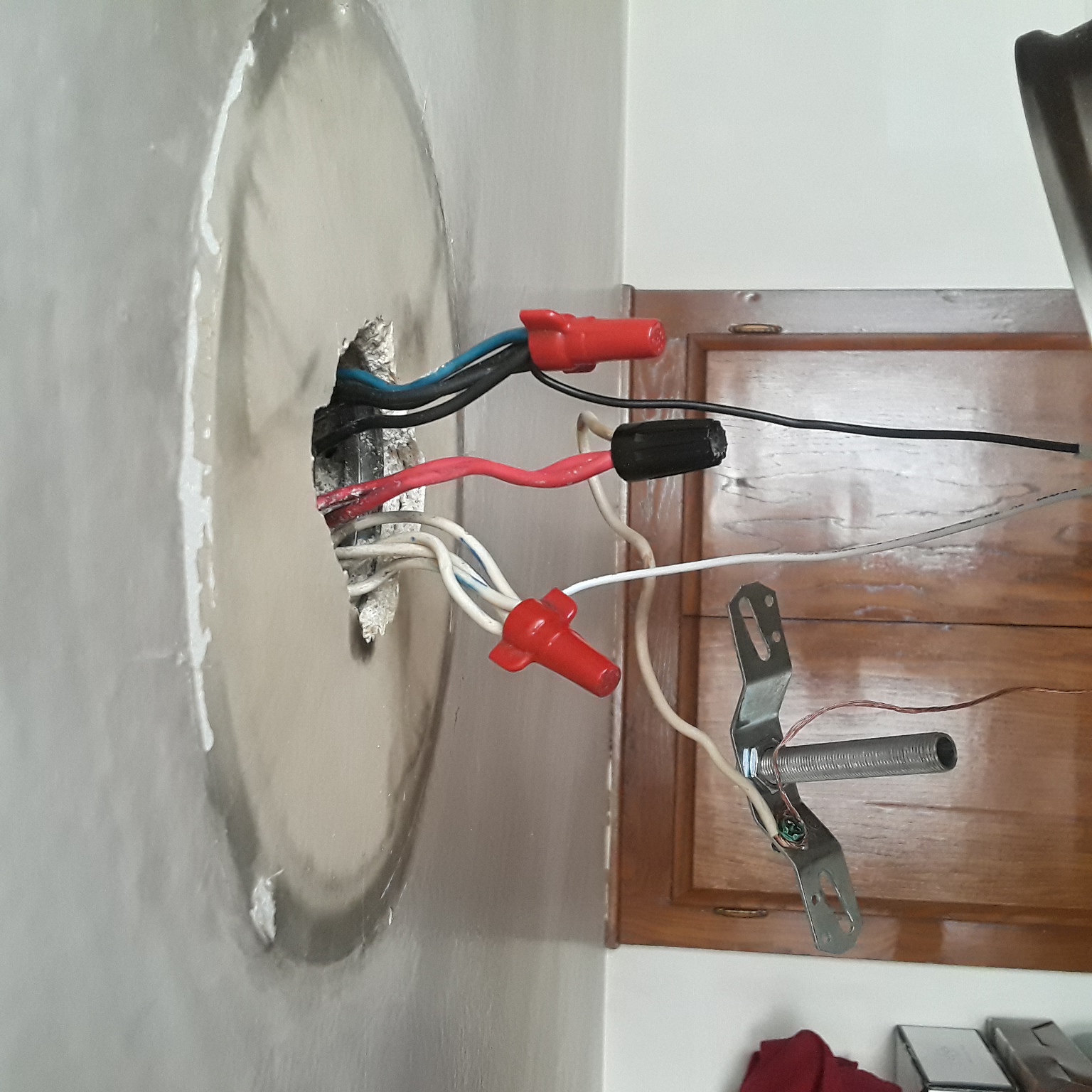So, I recently attempted to install a new light fixture to old wiring with no success. I have no electrical experience, so forgive me if this situation and the following questions are either stupid or redundant.
The old -- three light -- fixture included three black wires, three white wires, a red wire and a blue wire. It was replaced with a new fixture using just one black, one white, and one neutral wire.
I connected the new fixrure's single hot and neutral wires to one black and one white wire respectively. As the old wiring included no recognisable ground wire, I simple attached the new fixture's copper wire to the green grounding screw on the new mounting fixture.
The light does not come on when I turn the switch.
Do I need to connect all existing black and white wires to the corresponding single black and single white wire on the new fixture? Should the red and blue wires be attached to anything else or left unconnected and capped? Is it normal that there appears to be no ground wire included in the old existing wiring?
To answer ThreePhaseEel,

